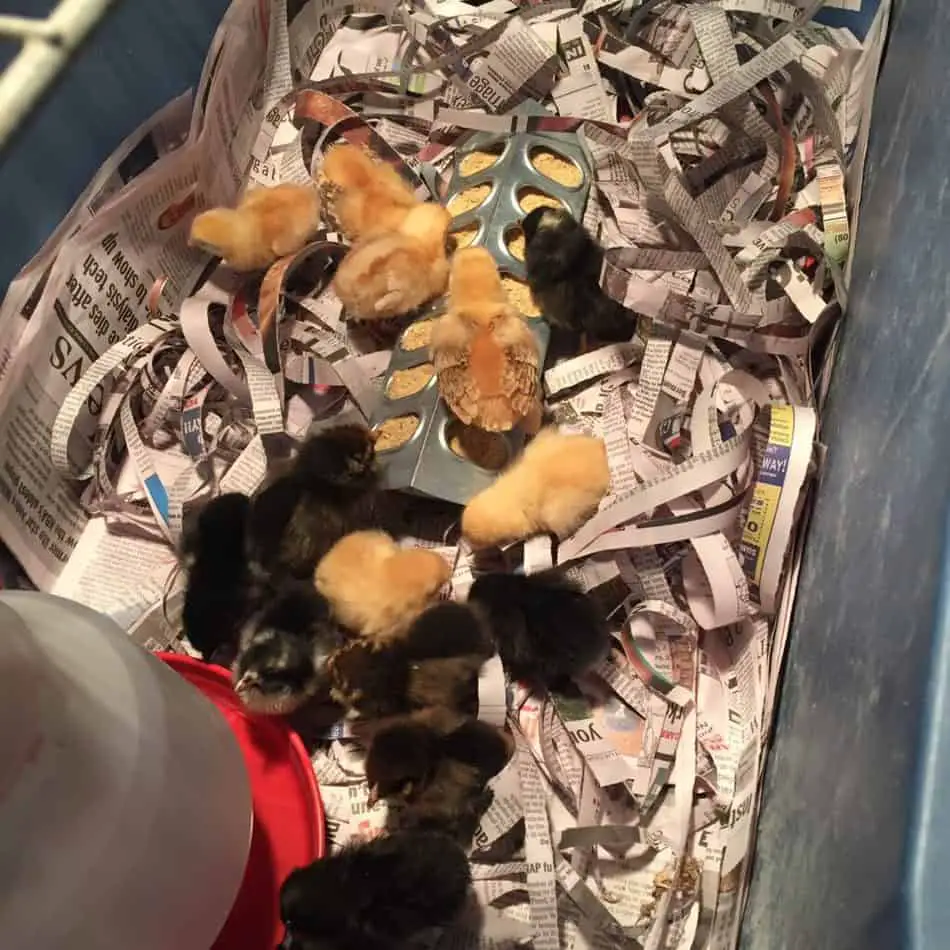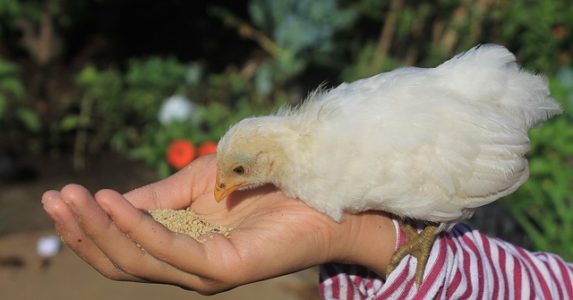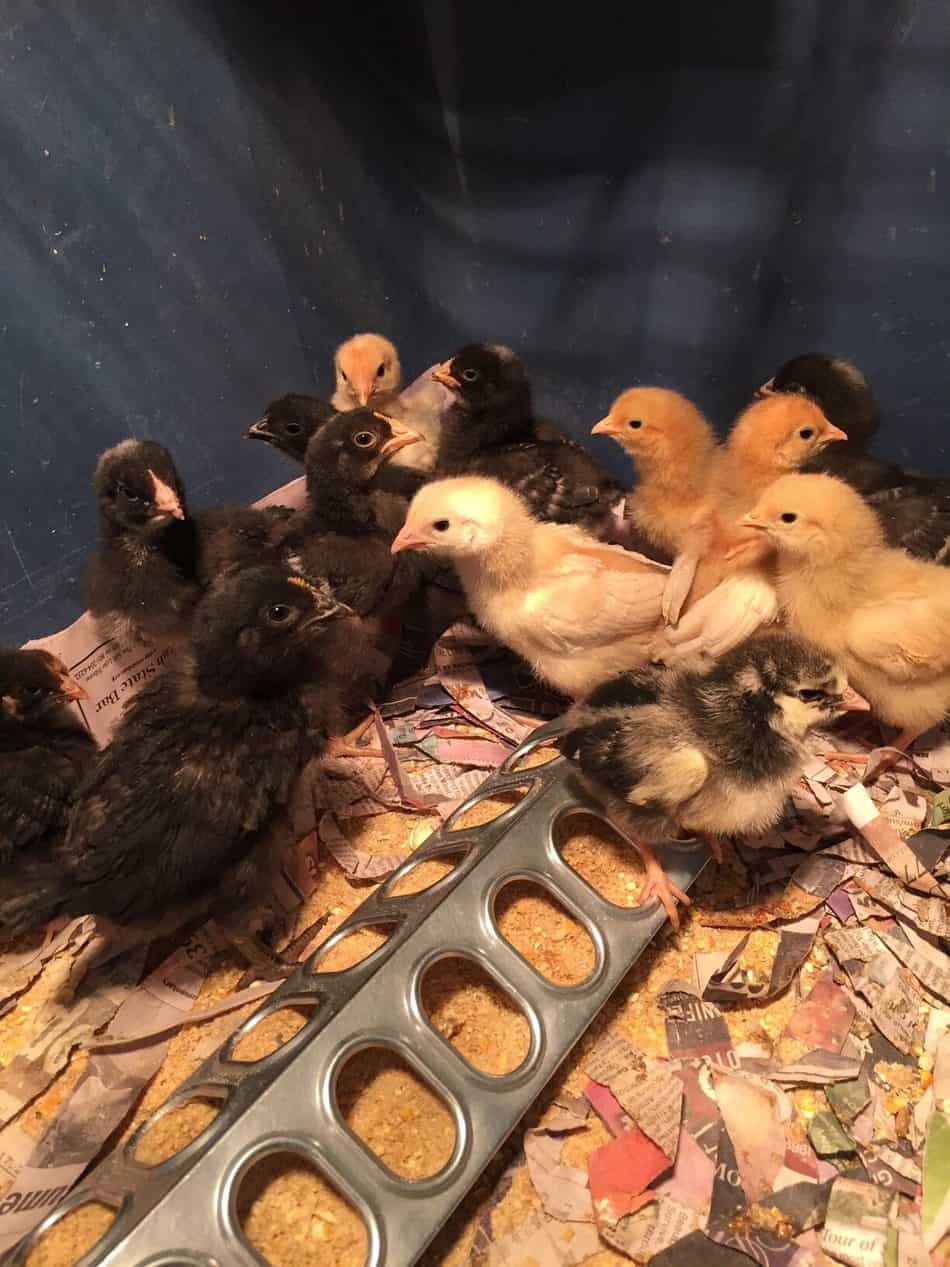Absolutely! It has been happening successfully for decades.
During times of crisis, or out of convenience, you may not be able to go to your local farm or ranch store to get new chicks to raise. Perhaps the selection of chicks at your local stores just isn’t what you want. Recently, we have seen local stores sell out of chicks as soon as doors open.
Many people are concerned about Corona virus infection or need to stay at home due to high risk health conditions.
There is a great solution to getting chicks without having to enter a store. You can order chicks online, over the phone, or through the mail from hatcheries. It’s simple and easy and is a great way to increase or begin your own flock.
Most poultry chick hatcheries have a mail directly option. There are some caveats to consider when going the mail order route. In this article we will let you know what to consider and what to look out for when getting your chicks in the mail.
Can chicks survive being mailed to you?
The first question that people ask is, “Can the baby chicks survive being shipped in the mail?”. The hatcheries take some precautions and the chicks survive just fine.
When a chick hatches it is still digesting the yolk sac. It takes about two days for the chicks to fully digest the yolk sac. This gives the hatcheries time to mail them out safely. As long as the chicks stay warm and arrive within three days of hatching, they will do great.
To keep the chick’s warm, hatcheries will have a minimum number you will need to make. Having 8-20 chicks in a container will keep them toasty warm and safe. Some hatcheries won’t have a minimum order, but they will add some cockerels or other chicks into the order to keep the desired chicks safe and warm. This will mean that you will need to deal with the extra chicks when they show up in the mail.
Hatcheries have been mailing chicks to customers for decades and have perfected how to do it well. The hatcheries know what they are doing, and the mail system has become very adept at handling and shipping them promptly.
If there are issues with the chicks, most hatcheries have a refund policy and are great to work with.

What kind of chicks should you order?
To begin with you will need to know the terminology of chicks. You may already know this, but just to make things clear.
Pullets are female chickens. Pullets are the ones you want to get if you want to have egg layers.
Cockerels are male chickens. Cockerels will grow up to be roosters. Cockerels can become aggressive and fight each other. There are some city ordinances that will not allow cockerels to be raised in city limits, so you will need to plan accordingly for a cockerel.
Some may wonder if only certain breeds of chicks can be ordered. The answer is no, you can order most any chick available at the hatchery. Most of the time you will be able to get different breeds and even ducks and geese in one order.
The only limitation will be availability. You should order your chicks early if you want them in the spring. With a pandemic scare and order you may need to order the chicks you want and wait for a while for your order to be filled. I have checked one of my favorite hatcheries and they are sold out until next year.
The options will usually be a straight run or pullets. The straight runs are usually cheaper because the hatcheries don’t have to take the step of sexting the chicks. Sexting the chicks is a fairly quick but tedious procedure and takes an educated eye to determine. A good sexter is a valued asset for hatcheries.
The straight run chicks are shipped as they hatch, with no guarantee of how many pullets or cockerels you may get. You may get all pullets, or all cockerels. It just depends on what hatches out that day.
To get guaranteed pullets in your order the chicks will have to go through the process of sexting. This step adds a little more cost per chick.
If you decide to order a straight run there is no guarantee how many of the chicks are pullets and how many are cockerels. It is a bit of a gamble.
Most hatcheries that I have researched and worked with have a 90% guarantee if you order pullets. They will refund the cost difference between cockerels and pullets.
If you are ordering for other than egg layers you may want to go for a straight run. For instance, many people will order broilers or Cornish Rock chicks. These are chickens raised for meat. You will generally harvest these birds within 6-8 weeks and a straight run will work fine.
If you are raising chickens for the feathers. For decorations or fly tying etc. You may want more cockerels than hens. The cockerels will have the more colorful and fancy feathers and plumage.
How to order chicks
Ordering chicks is very easy and straightforward. Most all reputable hatcheries have a website and are online. You can order through their website or call them directly.
You will want to carefully research the breed of chicken you would like to have. Some breeds are strictly laying hens, some are a dual purpose both laying and meat birds. Some are strictly for raising to harvest for meat. Some chickens are raised for pets, companions, or decoration. Still others are raised for their feathers. So, research before you buy.
Generally, you will need to make your orders early in the year. There is always a high demand for chicks in the spring. If you want to raise chicks in the spring and have them laying by the fall you will need to start early. If you don’t really have a deadline for when you want to have the chicks become layers, then many hatcheries will process orders after the big spring rush.
Preparation for the chicks
Once you order the chicks then you will need to prepare for when they arrive. They will need a brooder, brooder lamp or heat lamp, thermometer, grit, waterer, bedding, and feed. If you get these ready ahead of time the chicks will be able to be transferred quickly from the shipping box to their new home. The quicker the transition the healthier the birds will be.
Here are some Amazon links for:
Brooders can be fairly simple. They could be a big box with a heat lamp above. A brooder could be a large trough with a heat lamp. We use a large plastic storage bin with a heat lamp above it and a wire grate on top to keep the family cat out.
The main thing is that the brooder has light, heat, water, food, and bedding. The light and heat can be arranged with a heat lamp. Some lamps will have a red-light bulb. The red light is supposed to be easier on the chick’s eyes and helps to keep chicks from pecking each other. Most ducks and geese the red light is recommended.
You will need to have the brooder warmed up before you put the chicks in it. Chicks will not eat or drink until they have their body warmed up. The brooder temperature at the floor level should be between 100-105 degrees Fahrenheit for the first few days. You can then lower the temperature to 100 degrees Fahrenheit for the rest of the week.
Make sure there is enough room for the chicks to move outside of the heat source if they get too warm.
Water can be a small waterer. The water in the brooder will need to be warm water when you first put the chicks in. 98 degrees Fahrenheit is recommended. The chicks are very dehydrated and will drink like crazy for the first few days. As they drink if the water is too cold it will reduce their body temperature and put them into shock, it could make them sick or even die.
A trick that poultry farmers have used for years to encourage chicks to drink water is marbles. Take some colorful marbles, especially red, and put a few in the waterer. The chicks will try to peck at the bright colors and will be encourages to drink.
The food should be a good chick starter or high protein mash. The mash should be 18% protein or higher to begin with. You can feed them in easy starter feed trays. You will want to have a second small feeder with grit in it. The grit will help the chicks to masticate and digest their food.
The bedding in the brooder can be pine wood shavings, shredded newspaper, or clean straw. Do not use cedar of cypress shavings, they are toxic to poultry. We have used shredded newspaper over the years for chicken chicks. It seems to do well for us. Many like the easy cleanup of the wood shavings. The purpose of the bedding, or litter, is for it to be a cushion for the chicks and absorb the chicks waste.
Do not use fine sawdust or wood shavings. The chicks can get confused and eat it instead of the chicken feed which can result in death. You will need to change the bedding often to keep the chicks clean and healthy.

What to do with the chicks when they arrive
Often times the post office will contact you as soon as the chicks arrive. This way you will be able to get the chicks early instead of waiting for the post carrier to deliver to your home hours later. It might even be a good idea to give the post office a heads up that you have ordered chicks and want to pick them up as early as you can.
As soon as the chicks get into your possession you will need to give them some water. This does not mean put them near a waterer. You will need to manually teach them how to take their first drink.
When you get your chicks as you place them into the brooder. Take each chick one by one and dip their beak in to the water and let them go. The chick should instinctively look up and swallow. Once the chick has understood the technique you don’t need to repeat it. Some people get a little too excited and end up making the chicks sick repeating the drinking training too much.
A simple trick to teach them how to eat is to sprinkle a little food on a paper towel and put it on the floor of the brooder. This will help them to recognize food. After the first day they should recognize food in the feeder. Remove the paper towel as soon as the chicks begin to recognize food in the feeder. They could become imprinted to having the food from a paper towel if you don’t remove the towel after the first day.
You will also need to inspect the chicks to see if they have Pasty Butt.
While chicks are brand new, they can sometimes develop what is referred to as Pasty Butt. This is where the anal vent gets clogged up with fecal matter. This can happen for a variety of reasons. It is fairly common and easily treated. If left untreated the chick will get sick and could die.
Sometimes the new chicks in the mail will arrive with Pasty Butt. As you take each chick out of the box one by one inspect the chick to see if everything looks normal.
If there is a fecal deposit stuck to the rear end of the chick you will need to remove it to get everything moving the way it should. Get a damp warm paper towel or cloth and use it to clean up the little chick. Sometimes it will take a little soaking to get the fecal matter to soften enough to remove it.
I would caution you to take your time with this step. If you simply rip the clog off, you could create an open sore that may show blood. Chickens are easily turned to cannibalism and will pick at blood spots on other birds. If you are not careful you could end up having the rest of the chicks kill the injured chick.
Who should I order my chicks from?
This is a good question. You will find many hatcheries online if you just do an internet search. However, not all hatcheries are created equal. Take a little time to look through some reviews of the hatchery.
Look through the website and see how long the hatchery has been in business. If they have been around for a long time, they will have proven themselves to be quality hatchery.
As I stated earlier, you will want to order your chicks early in the year. There is usually a spring rush and chicks can become scarce. The hatcheries will generally be able to fill orders later in the season, but if you want those spring chicks laying eggs by the autumn then you need to get to ordering early in the year.
Summary
Ordering chickens through the mail is easy and works great. Many good hatcheries have been supplying poultry this way for decades. The mail service is well versed and prepared to handle chicks in the mail.
It’s as simple as researching what kind of chickens you want. Looking up a hatchery that meets your needs well. Ordering and paying for the chicks online or by phone. Then prepare for the chicks with the proper brooder, heat lamp, bedding, waterer, grit, and starter feed.

